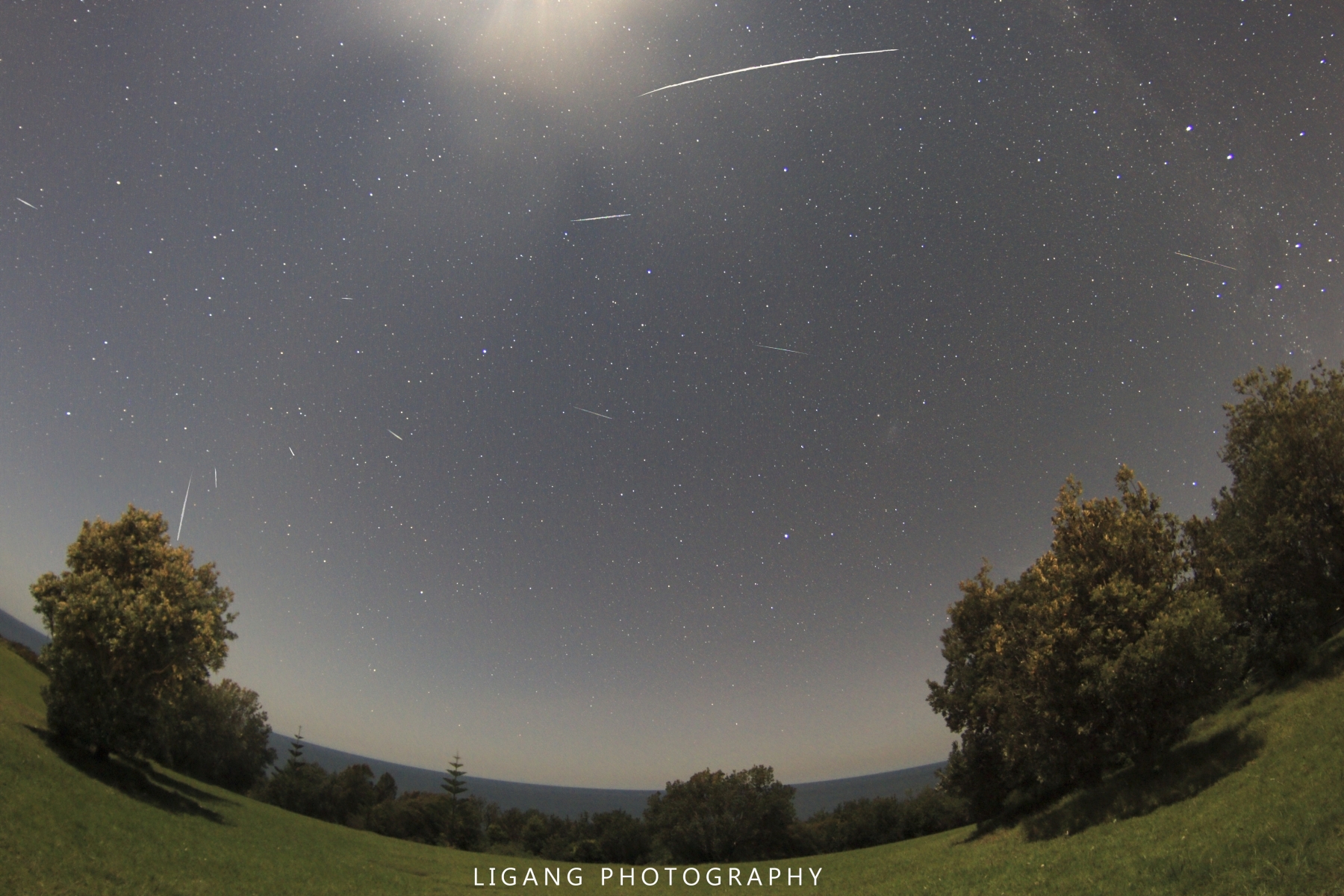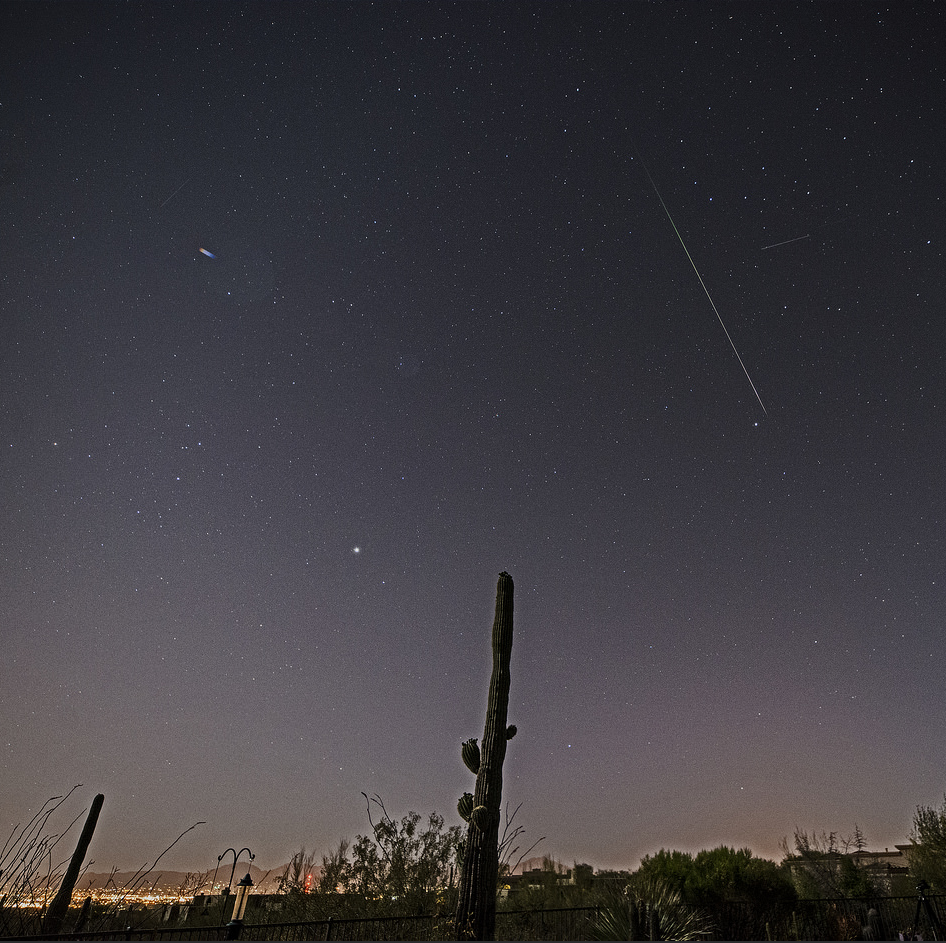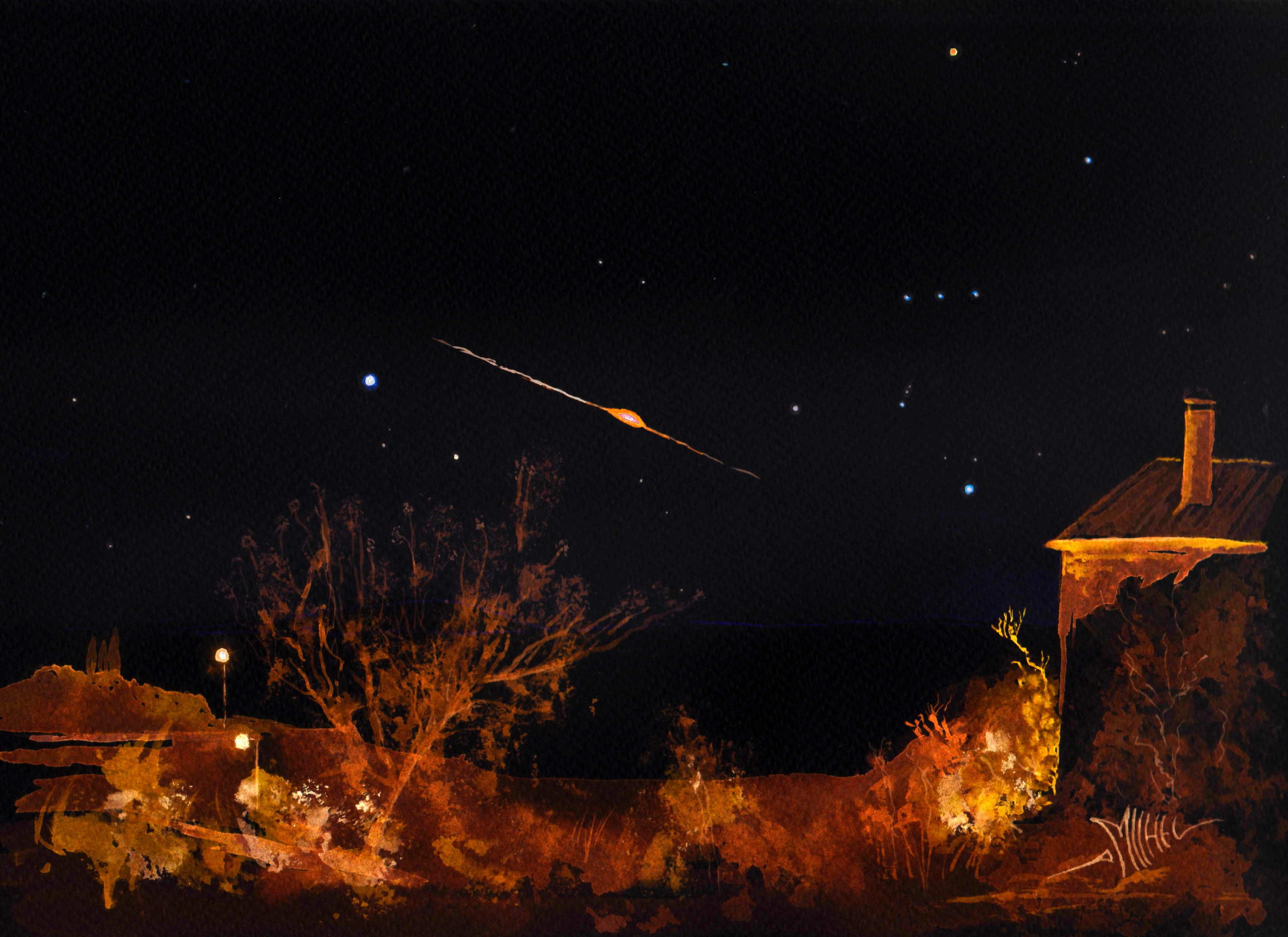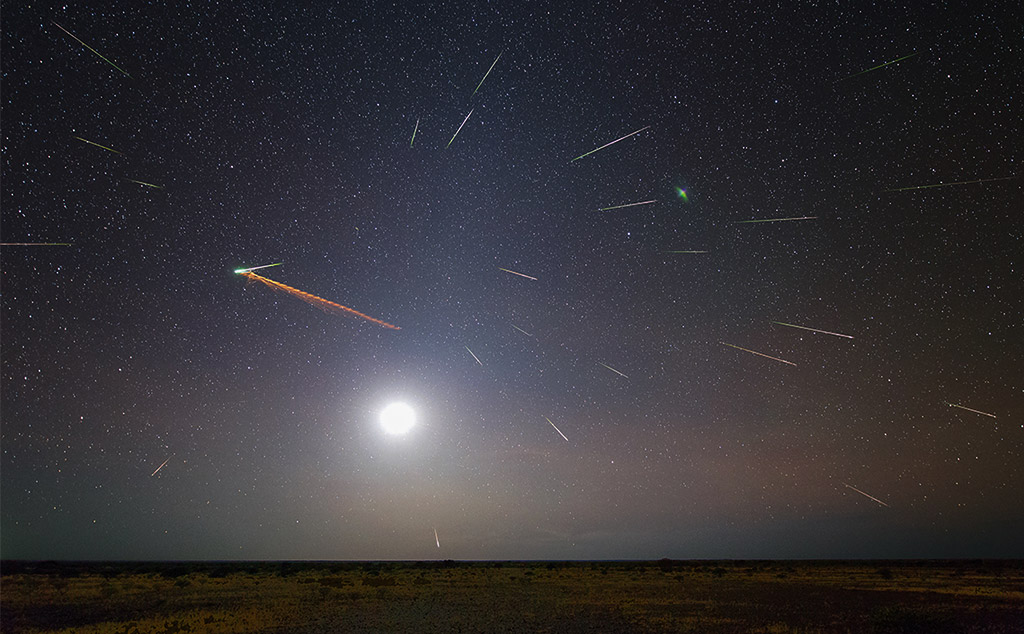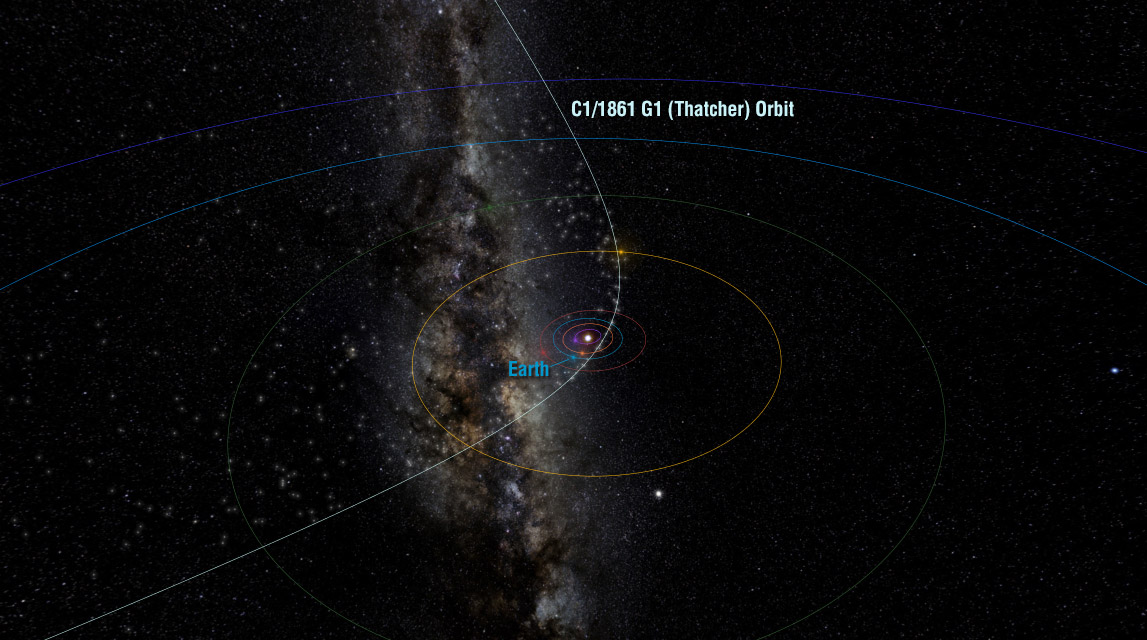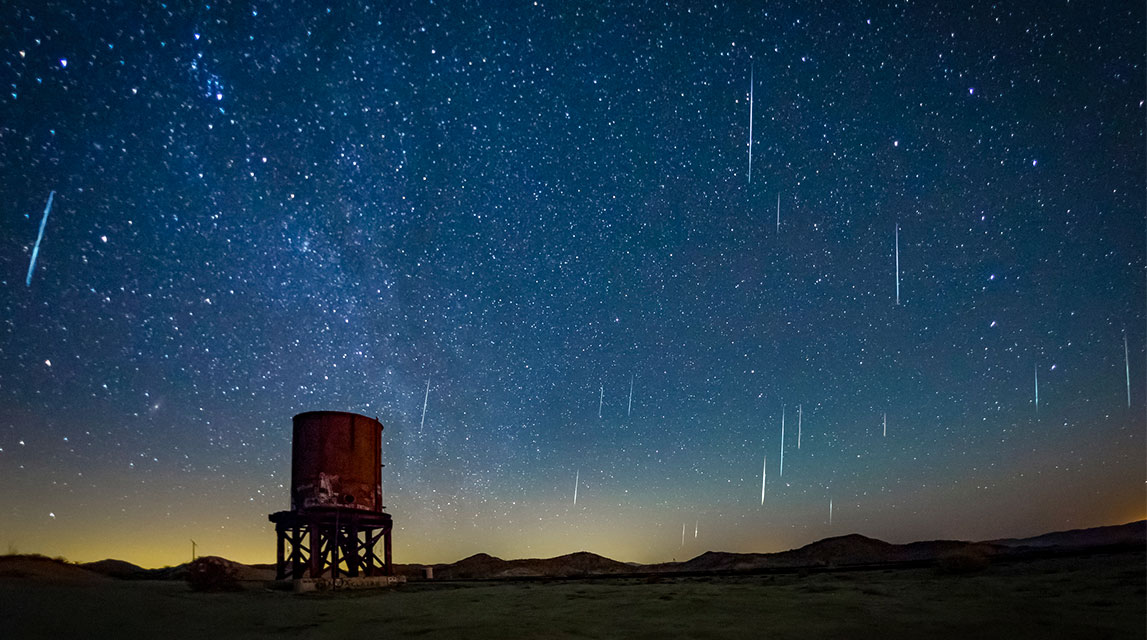
Meteor Activity Outlook for June 9-15, 2018
The estimated total hourly meteor rates for evening observers this week is 3 as seen from mid-northern latitude (45N) and 4 from the southern tropics (25S). For morning observers the estimated total hourly rates should be near 8 as seen from mid-northern latitudes (45N) and 11 from the southern tropics (25S).
 American Meteor Society
American Meteor Society


